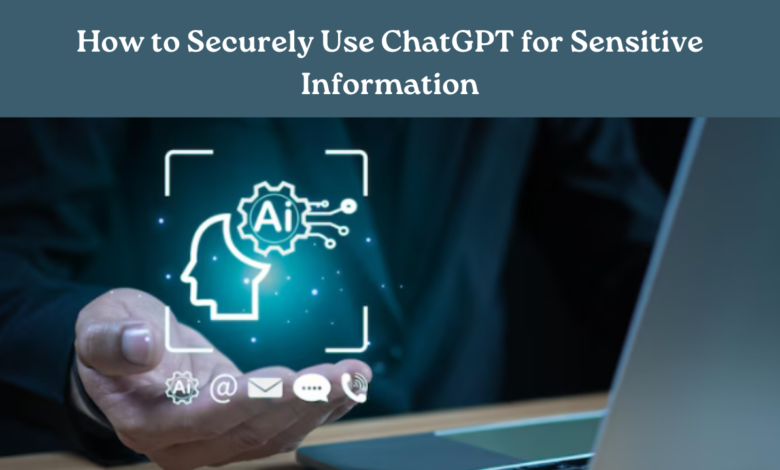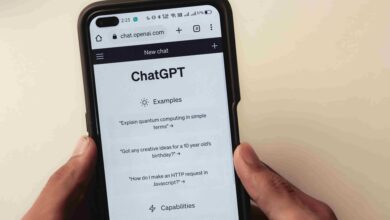How to Securely Use ChatGPT for Sensitive Information: Privacy Tips

In today’s digital age, the use of AI-powered chat platforms like ChatGPT has become increasingly common for various tasks, including handling sensitive information. While these tools offer convenience and efficiency, they also present potential risks to user privacy and data security. To leverage ChatGPT effectively while safeguarding sensitive information, it’s essential to adopt best practices and proactive measures.
This article explores key privacy tips and strategies to securely use ChatGPT for handling sensitive information. By understanding the risks, implementing encryption methods, and practicing data minimization, individuals and organizations can navigate the complexities of AI-driven communication with confidence and privacy in mind. Let’s delve into essential privacy considerations when using ChatGPT and discover practical techniques to protect sensitive data effectively.
1. Understanding the Risks
Sharing sensitive information online, especially within chat environments like ChatGPT, comes with inherent risks that must be recognized and managed effectively.
Firstly, there’s a risk of data interception or unauthorized access when transmitting sensitive information through AI-powered chat platforms. Unlike face-to-face interactions, online chats rely on data being processed and stored on servers, which could be vulnerable to breaches.
Secondly, AI models like ChatGPT learn from vast datasets, including user inputs during conversations. While this improves responses, it raises concerns about data retention and the inadvertent exposure of sensitive information within training data.
The importance of data privacy and security cannot be overstated when interacting with AI. Personal details shared during chats could be exploited if not adequately protected, leading to identity theft or fraud.
Understanding these risks is crucial for implementing effective strategies to safeguard sensitive information when using AI chat platforms like ChatGPT. By prioritizing data privacy and security, users can use AI technology more safely and confidently while mitigating potential risks.
2. Encryption and Secure Channels
Using encrypted channels and secure platforms is crucial when sharing sensitive data, especially through AI chat platforms like ChatGPT.
Encryption scrambles data into an unreadable format during transmission, ensuring that even if intercepted, the information remains protected and secure. End-to-end encryption (E2EE) tools or platforms are recommended for the highest level of security. E2EE ensures that data is encrypted on the sender’s device and can only be decrypted by the intended recipient, preventing unauthorized access.
Platforms prioritizing user privacy often integrate E2EE as a standard feature. Examples include Signal, WhatsApp (with E2EE enabled), and secure email services like ProtonMail. Utilizing encrypted channels and secure platforms is essential for safeguarding sensitive information when using AI chat platforms, ensuring data privacy and protection.
3. Data Minimization
When using AI models like ChatGPT, prioritize data minimization to protect sensitive information:
Identify necessary information before starting a conversation.
- Focus on sharing only relevant details.
- Use generic terms instead of specific identifiers.
- Exercise caution with sensitive topics.
- Regularly review and purge stored data.
- Opt for anonymous interactions when personalization is not needed.
By minimizing data shared with AI models, users can enhance privacy and mitigate risks associated with disclosing sensitive information online.
4. Contextual Awareness
To use AI platforms like ChatGPT responsibly and securely, users should prioritize contextual awareness when sharing sensitive information:
4.1 Understanding the Context:
Consider the purpose and relevance of sharing information during AI interactions.
4.2 Assessing the Need for Disclosure:
Share sensitive data only when necessary for the conversation’s intended outcome.
4.3 Choosing Appropriate Settings:
Use AI platforms in secure environments to avoid exposing sensitive information.
4.4 Recognizing Red Flags:
Be cautious of suspicious requests or phishing attempts during interactions.
4.5 Adopting Privacy by Design:
Emphasize privacy protection in AI platform development and usage.
4.6 Raising Awareness of Risks:
Educate users about potential consequences of sharing sensitive data online.
By practicing contextual awareness, users can make informed decisions to protect their privacy and minimize risks when engaging with AI technologies like ChatGPT.
5. Avoidance of Personal Identifiers
When using AI platforms like ChatGPT, it’s critical to avoid sharing personally identifiable information (PII) such as full names, addresses, or financial details due to the significant privacy and security risks involved if this information is exposed or intercepted by unauthorized parties. Instead of disclosing specific personal identifiers, users should opt for placeholders or general terms when referring to individuals, locations, or sensitive details. For example, use first names or nicknames instead of full names, and refer to roles or relationships (“my doctor”) rather than using specific names. Similarly, avoid sharing exact addresses or detailed financial information; use broader descriptions or categories to protect sensitive data from potential exploitation. By adopting these practices, individuals can enhance their privacy and security during AI interactions, minimizing the risk of identity theft, fraud, or other malicious activities associated with disclosing personal information online.
6. User Authentication
User authentication is essential to verify the identity of recipients or platforms before sharing sensitive information. Stress the importance of using secure login methods, such as passwords or biometric authentication, to ensure that only authorized individuals or devices have access to sensitive data. Highlight the risks associated with impersonation and phishing attacks, where malicious actors may attempt to deceive users into disclosing personal information or credentials. Emphasize the need for vigilance and skepticism when receiving unexpected requests for sensitive information to prevent falling victim to these types of attacks.
7. Limitations of AI Security
While AI models like ChatGPT offer valuable assistance, it’s important to acknowledge their limitations in handling and protecting sensitive information. Clarify that AI systems are not foolproof and may have vulnerabilities that could be exploited by malicious actors. Remind users that the ultimate responsibility for data security lies with them, and they should exercise caution when sharing sensitive information with AI models. Encourage users to be mindful of the data they provide and consider alternative communication methods or encryption for particularly sensitive topics or information.
8. Regular Updates and Security Checks
Encourage users to prioritize regular updates and security checks on their devices, applications, and software to mitigate potential security risks. Recommend enabling automatic updates for operating systems, applications, and antivirus software to ensure they have the latest security patches and protections against known vulnerabilities. Emphasize the importance of using reputable security software from trusted vendors to provide additional layers of protection against malware, phishing attempts, and other cyber threats. By staying proactive with updates and security checks, users can reduce the likelihood of security breaches and protect their sensitive information more effectively.
9. Legal and Compliance Considerations
Remind users of the importance of adhering to legal regulations and compliance standards when handling sensitive data, such as the General Data Protection Regulation (GDPR) or the Health Insurance Portability and Accountability Act (HIPAA). Provide guidance on specific regulations relevant to their location or industry, emphasizing the need to protect personal information and ensure data privacy. Encourage users to familiarize themselves with data protection laws and implement necessary measures to comply with legal requirements, such as obtaining consent for data processing and implementing data security measures.
10. Incident Response Plan
Advise users to develop and maintain an incident response plan for handling data breaches or security incidents involving sensitive information. Recommend establishing clear procedures and protocols for detecting, containing, and mitigating security breaches promptly. Encourage users to designate responsible individuals or teams to manage incident response efforts and ensure timely reporting to the appropriate authorities or service providers. Emphasize the importance of transparency and cooperation during incident response to minimize the impact of security incidents on sensitive data and uphold user trust in data protection practices.
In conclusion, using AI-powered chat platforms like ChatGPT poses risks to user privacy. This article highlights key privacy tips, including data minimization, encryption methods, and avoiding the sharing of personal identifiers. By implementing these strategies, users can navigate AI-driven communication securely and protect sensitive information effectively.
For more tips on privacy and security with ChatGPT, visit www.intogeeks.com.




